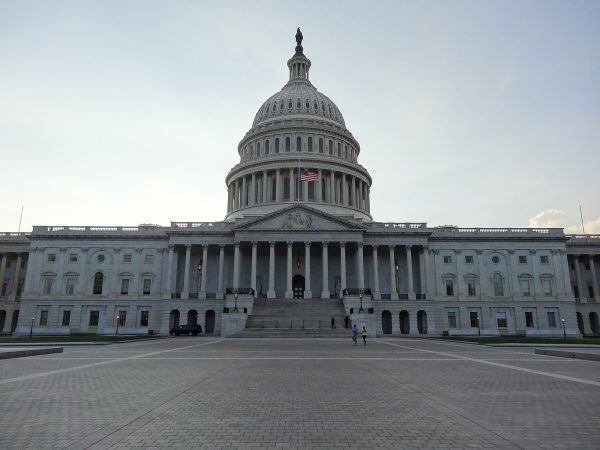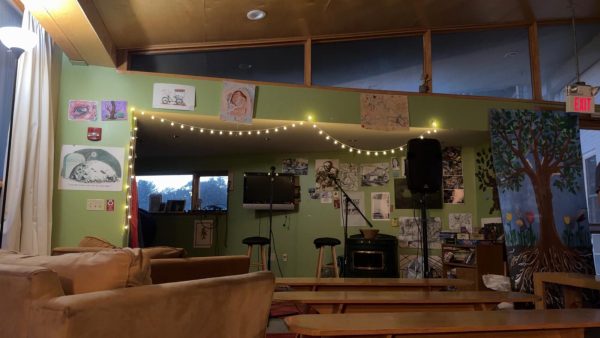CSE Hosts Kick-Off Event
The Center for Sustainability Education (CSE) launched a “Carbon Neutrality Kick-Off” event to educate students on carbon neutrality because it is a “campaign to get everyone involved in,” said Director of the CSE Neil Leary.
The event took place in the social hall on Monday, Sept. 23 at 5:30 p.m. and drew in a crowd of 25-30 students from different class years along with campus eco-reps.
Student Senate President Kevin Ssonko ’20 made opening remarks and reflected on the relevance of climate change issues to the Dickinson College community. “I appreciate that we are continuing to go in this direction of sustainability,” Ssonko said as he explained that campus inclusivity is paired with sustainability.
In 2008 Dickinson decided to become carbon neutral with a goal of 25 percent reduction of on campus emissions by 2020. The college is expected to reach that goal with help from investments in carbon offsets and outside projects to reduce carbon emissions. These investments account for the other 75 percent of emissions, making the college carbon neutral. According to Alison Miller ’20, special projects intern at the CSE, Dickinson has a goal of 50 percent reduction of on campus emissions by 2030 and explained that it could be “more difficult” than the previous initiative to become carbon neutral. Miller reflected on projects like the campus wide installation of LED lights and the creation of the solar field and said the college will “need more projects like those” to achieve their future goal.
Ken Shultes, vice president of sustainability and facilities planning, explained other on-campus projects that will help the college reach carbon neutrality like chilled water efficiency and proposed electric vehicle charging stations. He also explained that the college operates on a “green revolving loan fund” where money used to maintain sustainable projects is recycled back in a green project fund.
Although the college can take sustainable measures to achieve carbon neutrality, there are factors that challenge these goals. According to Shultes, these variables are “road bumps not necessarily in our control” like higher global temperatures, the number of people on campus, and the campus’s physical size. All the variables cause the college to expend more energy to meet community needs, explained Shultes.
Both Shultes and Leary reiterated the point that “climate change means behavior change” where individuals must choose to make sustainable choices. Shultes praised the Tree House as a “good example of sustainable behavior” due to residents of the Tree House making environmentally conscious living decisions daily.
The CSE created monthly goals for the Dickinson community to participate in sustainable practices and “motivate the changes in behavior,” said Leary. Examples of some of the following months’ themes include increasing walking, biking and ride sharing (Sept.), building a plant rich diet, and reducing food waste. After presentations by staff, students were broken down into small groups to discuss ways of encouraging the themes of sustainability to other students.
Students responded positively to the carbon neutrality kick-off event. Lucas Wesley ’23 explained that the presentations helped him to understand campus actions towards achieving carbon neutrality and the “future goals for sustainability objectives.” Emily Pikturna ’23, an eco-rep for her first-year dorm, said she is glad that there are more students besides her fellow eco-reps who are interested in sustainability on campus. Pikturna also explained that she appreciates the CSE for having concrete plans to engage students in sustainable behaviors because, “I think if we start too broad it’s hard to go somewhere. So, they have ideas already and are actually working on those ideas,” she said.
Willow Hubert ’20, the carbon neutrality coordinator for the CSE, said events and conversations around this topic are important for students because of Dickinson being one of the first college campuses to reach this goal. “[W]e are trying to educate people on what exactly carbon neutrality is and how they can get involved,” Hubert said and explained that student involvement in carbon neutrality practices are important towards maintaining that goals. Miller also commented and said that students should be actively involved in carbon neutrality since Dickinson is a leader in sustainability. “I also think it’s important for our goals in social justice, diversity and inclusion,” Miller said, “because there are increasingly more relationships being established and findings that show that there’s a strong relationship between environmental degradation and communities of higher education.” Like Shultes and Leary, Miller also highlighted the importance of individual action especially among students. “Behavior change is, in my opinion, the most effective,” Miller said, “but that really comes from students engaging and the people presenting the information to be engaging as well.”




